8 Real-Life Locations of Famous Paintings You Can Visit Today
By Kelly Richman-Abdou on August 19, 2018
Have you ever wanted to step inside a work of art? Though this may feel like a pipe dream for many, the settings of some of the most famous modern masterpieces exist in real life—and even welcome visitors.
8개소의 실제 장소와 일치하는 유명화가의 그림들
프랑스 남부 지역의 몽상적인 남부의 한 카페에서 오하이오주의 절제된 별장에 이르기까지, 이 장소들은 빈센트 반 고흐, 그랜트 우드, 클로드 모네, 에드바르트 뭉치를 포함한 세계에서 가장 상징적인 예술가들에게 영감을 주었다. 현대 미술 애호가들이 멀리 떨어져 있지만 친숙한 장소들을 방문함으로써, 박물관들의 벽과 미술 역사책들 밖에서 그들이 가장 좋아하는 그림들을 경험할 수 있다.
황기철 콘페이퍼 에디터 큐레이터
Ki Cheol Hwang, conpaper editor, curator
From a cafe in the dreamy south of France to an understated cottage in Ohio, these locations have inspired some of the world's most iconic artists, including Vincent van Gogh, Grant Wood, Claude Monet, and Edvard Munch. By visiting these far-away yet familiar sites, modern art lovers can experience their favorite paintings outside of the walls of museums and the pages of art history books.
Explore some of the most well-known works of art with this selection of must-see sites.
Le Café La Nuit (Café Terrace at Night by Vincent van Gogh)
In 1888, Post-Impressionist painter Vincent van Gogh visited Arles, a colorful city in the south of France. Here, he developed his distinctive style and completed some of his most well-known paintings, including Café Terrace at Night.
Featuring a glowing cafe set against the artist's signature starry sky, the painting portrays a September evening in the Place du Forum, a square in the center of the city. “On the terrace,” Van Gogh wrote in a letter to his sister, “there are little figures of people drinking. A huge yellow lantern lights the terrace, the façade, the pavement, and even projects light over the cobblestones of the street, which takes on a violet-pink tinge.”
Van Gogh painted this piece en plein air, or “outside.” Today, you can stand in the very spot where he set up his easel, located just next to the familiar yellow awning of the aptly renamed Le Café La Nuit.
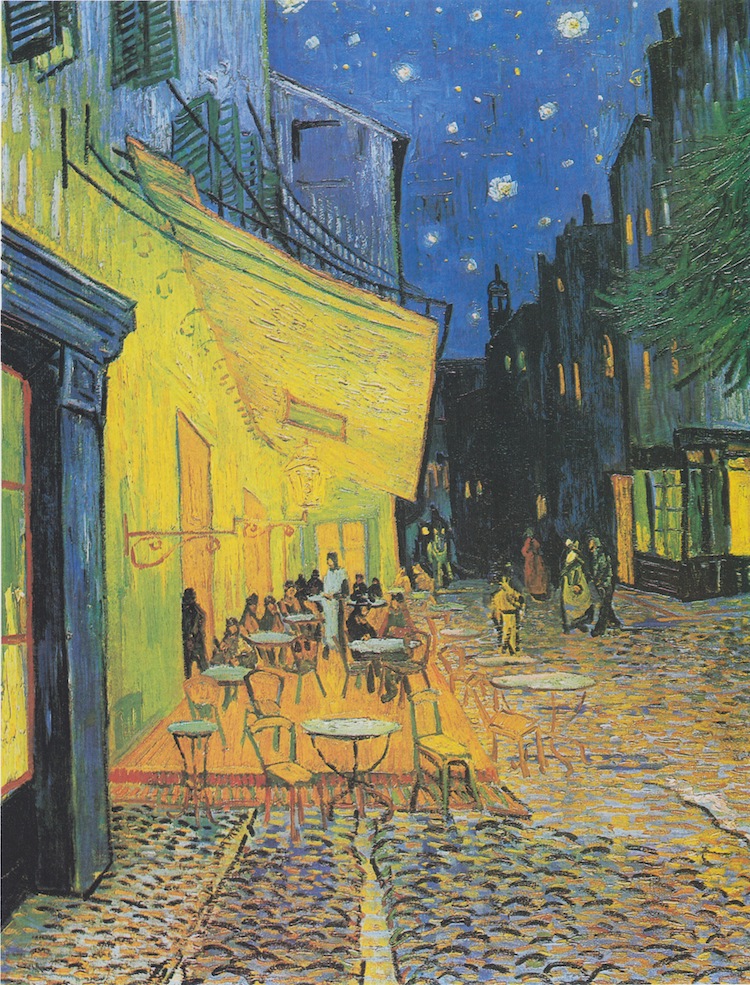
Vincent Van Gogh, “Café Terrace at Night” (1888) (Photo via Wikimedia Commons Public Domain)
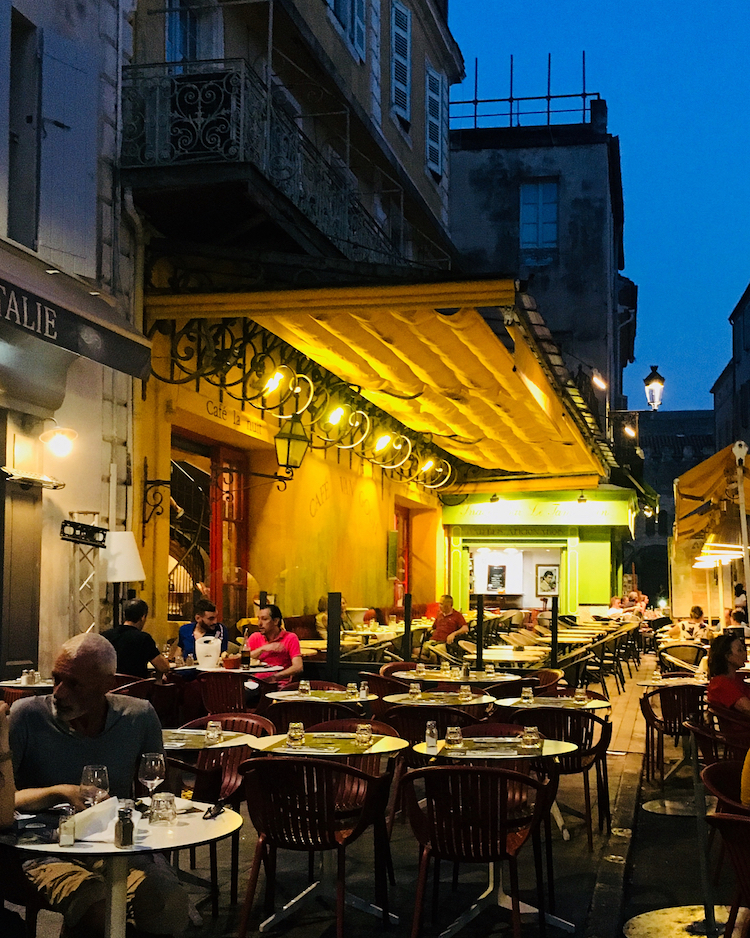
Photo: Kelly Richman-Abdou / My Modern Met
Atelier Cézanne (Series of Still Life Paintings by Paul Cézanne)
Much like fellow Post-Impressionist Van Gogh, painter Paul Cézanne found ample inspiration in the idyllic south of France. Unlike the Dutch artist, however, Cézanne was born and raised in the area, with Aix-en-Provence serving as his home base for most of his life.
Here, Cézanne converted an old farmhouse into a sunny studio. In this atelier, he completed several famous paintings, including his charming Still Life with Plaster Cupid.
Today, visitors to the Aix-en-Provence area can stop by his studio, which still houses the artist's original furniture, painting supplies, and still life props. Nestled in the hills, it is no wonder this location appealed to the artist, who noted that he “can work better there than in the city.”
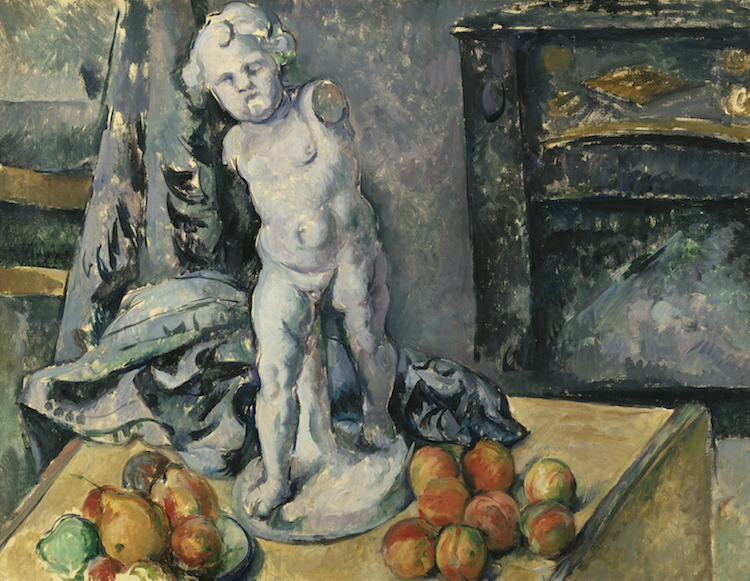
Paul Cézanne, “Still Life with Plaster Cupid” (ca. 1890s) (Photo: Nationalmuseum via Wikimedia Commons Public Domain)
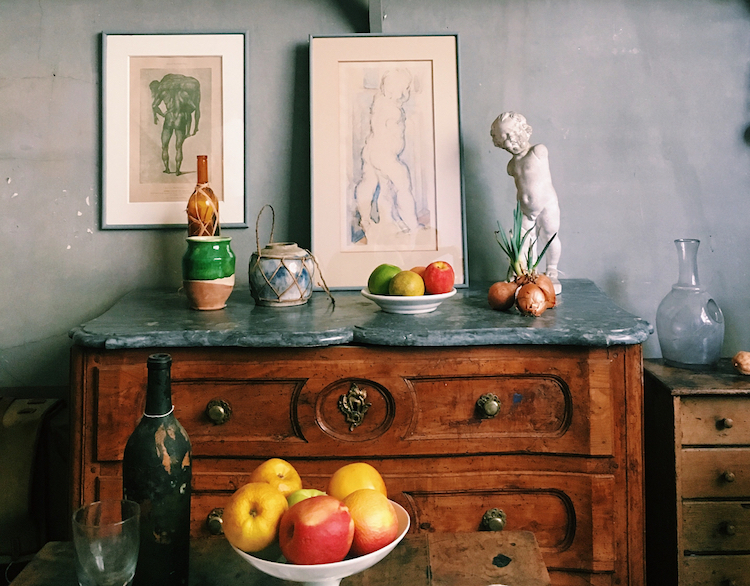
Photo: Kelly Richman-Abdou / My Modern Met
View from Terrain des Peintres in Provence (Mount Saint Victoire Series by Paul Cézanne)
Between 1882 and 1906, Cézanne completed at least 30 paintings of Mount Saint Victoire, a mountain range in Provence. In this series, the artist famously experimented with color, composition, and brushstroke, making it one of the most significant projects of his career.
Most of these pieces were painted from a look-out point located a short distance from his studio. Known today as the Terrain des Peintres, this stunning vista is accessible by a special “Cézanne Trail,” allowing visitors to quite literally follow in the footsteps of the iconic artist.
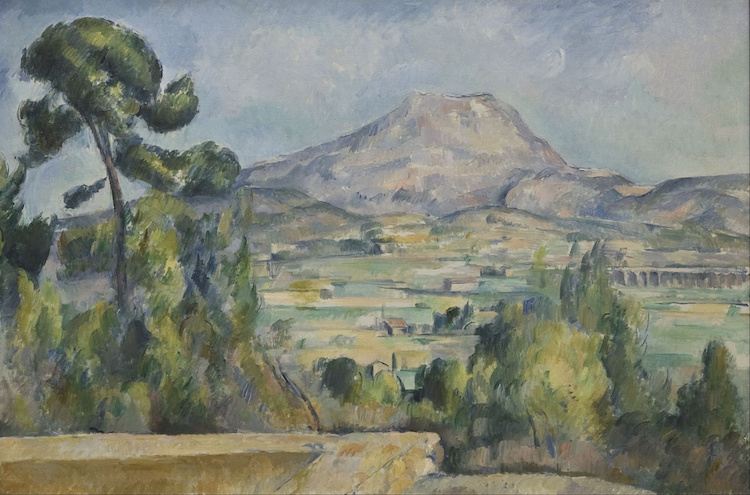
Paul Cézanne, “Mount Saint Victoire” (ca. 1890) (Photo: Google Arts & Culture via Wikimedia Commons Public Domain)
Monet's Garden in Giverny (The Water Lilies and Japanese Bridge Series by Claude Monet)
Impressionist Claude Monet moved to a house in Giverny, a commune in northern France, in 1883. It is here that the Impressionist artist created and cultivated his “most beautiful masterpiece”: a Japanese-inspired garden.
Featuring weeping willow trees, year-round blooms, and an aquatic-flower pond as its centerpiece, this manicured plot of land inspired some of Monet's most famous series, including the 250-piece Water Lilies and 12 paintings of his green Japanese footbridge. “I work at my garden all the time and with love,” Monet famously said. “What I need most are flowers, always. My heart is forever in Giverny.”
Today, the artist's beloved garden—as well as his home, decorated with an impressive collection of Japanese woodblock prints—is a popular tourist destination, boasting over 500,000 visitors each year.
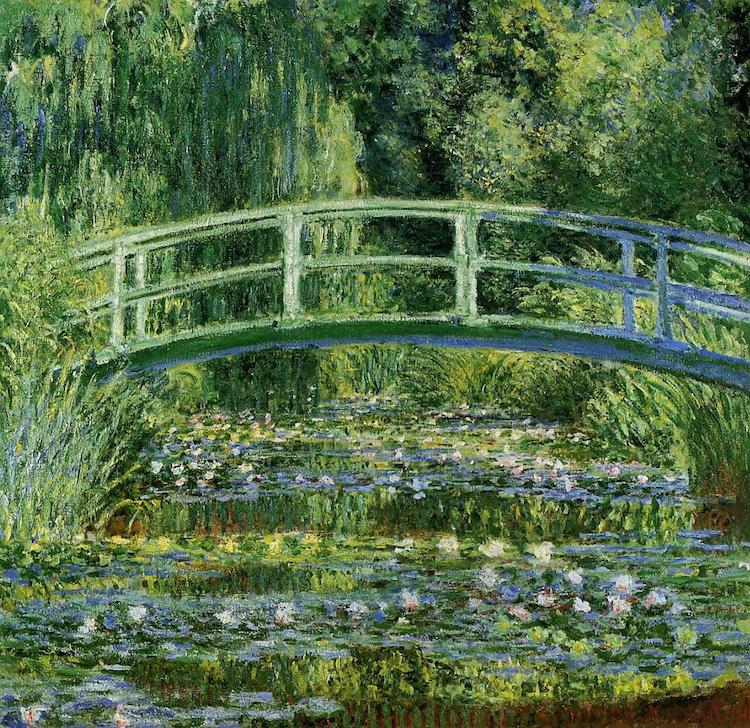
Claude Monet, “Water Lilies and Japanese Bridge” (ca. 1897 and 1899) (Photo: The Athenaeum via Wikimedia Commons Public Domain)
The Palace of Westminster (Houses of Parliament Series by Claude Monet)
During his time in Giverny, Monet made frequent trips to London. Here, he painted 25 studies of the Palace of Westminster that experimentally explored the sky's changing color and its consequent reflections on the River Thames—an artistic task that proved to be his “day-long obsession, joy, and torment.”
Monet is believed to have completed these pieces from a second-floor terrace of St. Thomas Hospital. While viewing the glistening Houses of Parliament from this exact location may prove difficult today, a stroll along the river's banks and bridges offers nearly identical views.
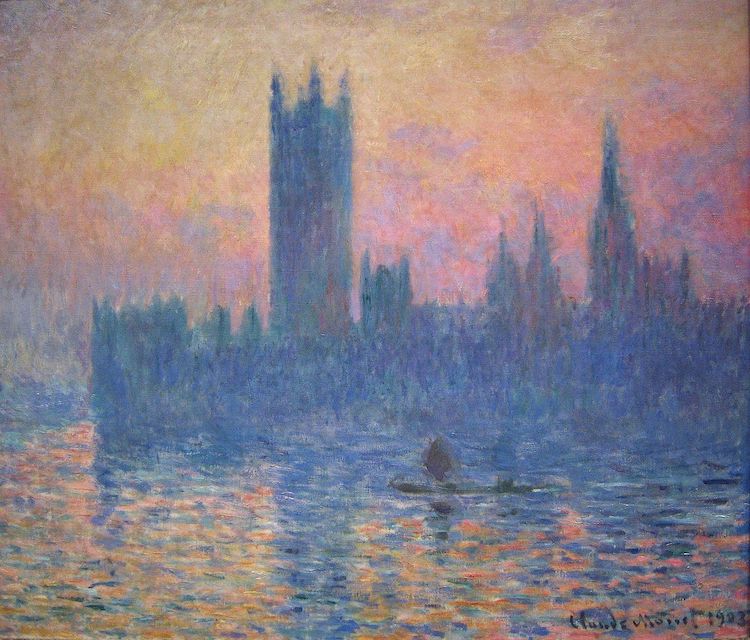
Claude Monet, “The Houses of Parliament, Sunset” (1903) (Photo: Postdlf via Wikimedia Commons Public Domain)
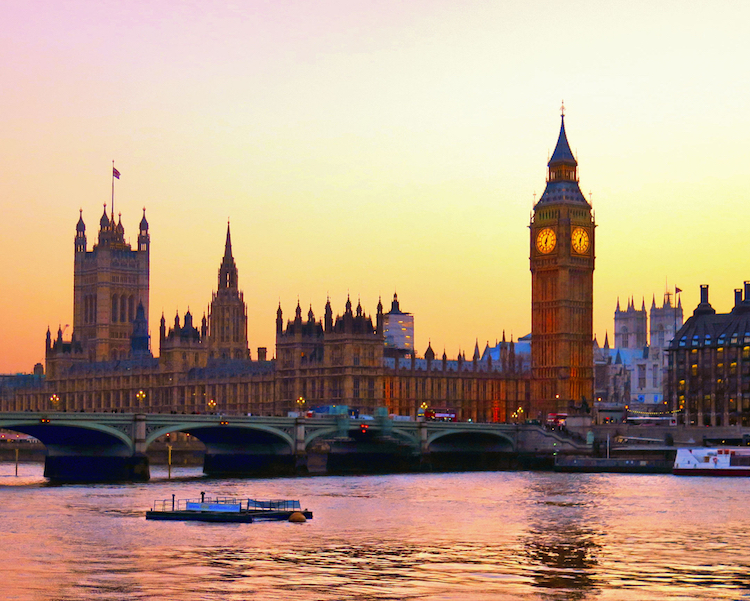
Parliament at sunset (Photo: poludziber via Shutterstock)
Maison Fournaise (Luncheon of the Boating Party by Pierre-Auguste Renoir)
Luncheon of the Boating Party is one of Pierre-Auguste Renoir's most famous works. Initially exhibited at the Seventh Impressionist Exhibition in 1882, the large-scale painting has been praised for centuries, making its setting—the Maison Fournaise, a restaurant on Chatou Island—a popular destination for dedicated fans of Impressionism.
Situated just outside of Paris, the Maison Fournaise offered boat rentals and scenic dining in the late 19th century. During this time, Renoir and other French painters regularly visited the establishment, as evident in the Luncheon of the Boating Party.
While the restaurant closed its doors in 1906, it reopened in 1990. Today, Maison Fournaise remains in business, inviting you to “relive the Impressionist joys” as you dine on its famous riverside balcony.
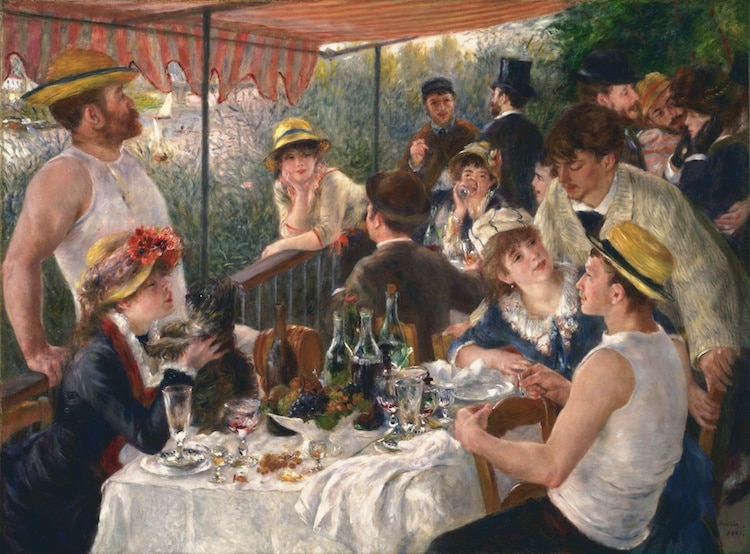
Pierre-Auguste Renoir “Luncheon of the Boating Party” (1880-1881) (Photo: The Phillips Collection via Google Arts & Culture Public Domain)
Valhallvegen Road (The Scream Series by Edvard Munch)
From 1893 through 1910, Norwegian printmaker and painter Edvard Munch created his well-known series, The Scream. Composed of four works on cardboard and board, this collection stars a shrieking figure as its subject. While medium, color palette, and attention to detail vary from piece-to-piece, each features the same setting: a bridge spanning a blue body of water, set against a dusky sky.
This now-famous scenery was inspired by one of Munch's sunset strolls, as he described in his diary: “One evening I was walking along a path, the city was on one side and the fjord below. I felt tired and ill. I stopped and looked out over the fjord—the sun was setting, and the clouds turning blood red. I sensed a scream passing through nature; it seemed to me that I heard the scream. I painted this picture, painted the clouds as actual blood. The color shrieked. This became The Scream.”
The path described by Munch is believed to be Valhallvegen Road, an overlook situated on Oslo's Ekeberg Hill.
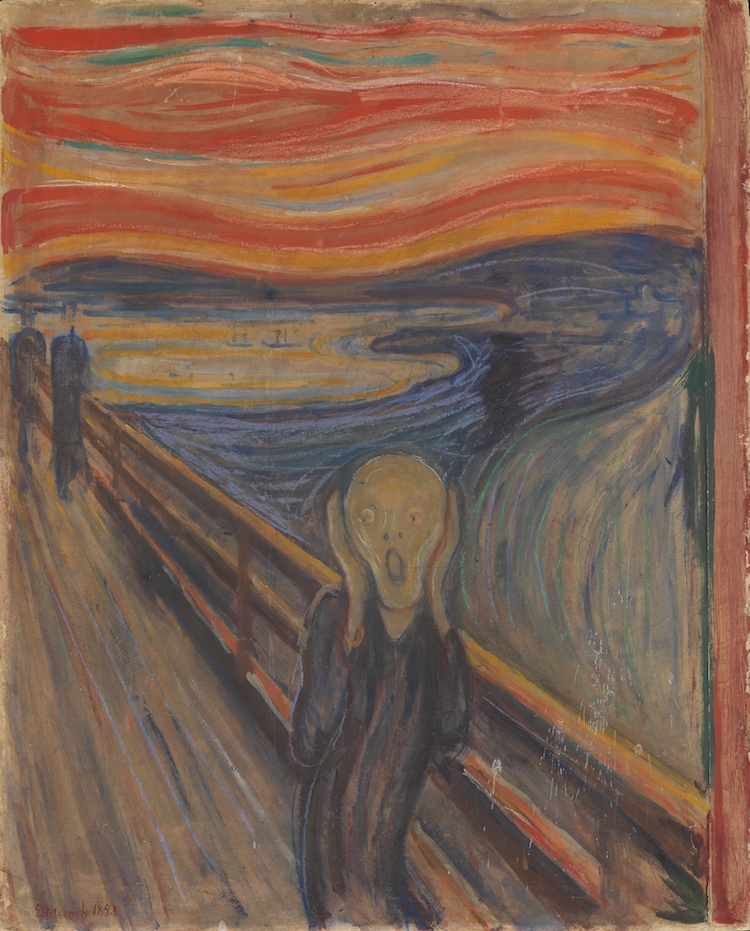
Edvard Munch, “The Scream” (1893) (Photo: National Gallery of Norway via Wikimedia Commons Public Domain)
Dibble House (American Gothicby Grant Wood)
In 1930, artist Grant Wood painted American Gothic, one of the most recognizable modernist works.
The piece shows a morose man and woman standing before a small, white, and “very paintable” house with an eye-catching neo-Gothic window. While believed by many to be a couple (namely, a farmer and his wife), the figures are actually modeled after Wood's sister and dentist.
Today, fans of the painting can visit the Dibble House (a name inspired by the quaint cottage's first owner, Charles Dibble), which is listed on the National Register of Historic Places. Located in Eldon, Ohio, the house now has a museum and visitor center, which even provides props for American Gothic-inspired photo shoots!

Grant Wood, “American Gothic” (1930) (Photo: Google Arts & Culture via Wikimedia Commons Public Domain)


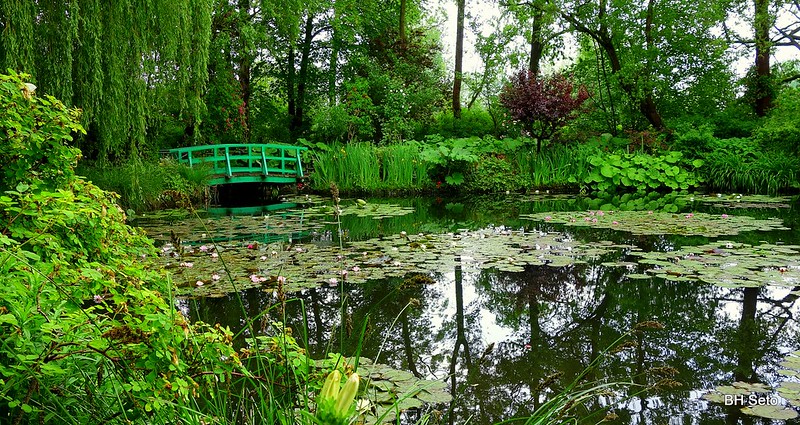
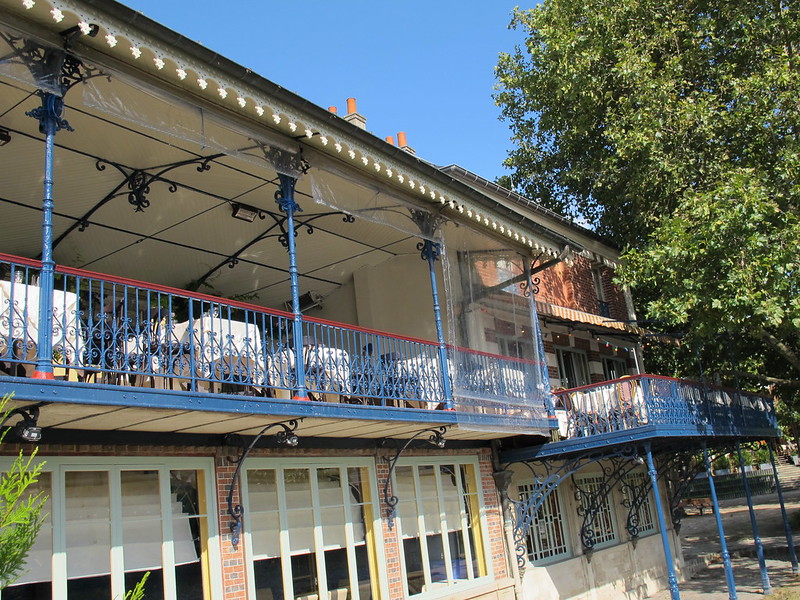
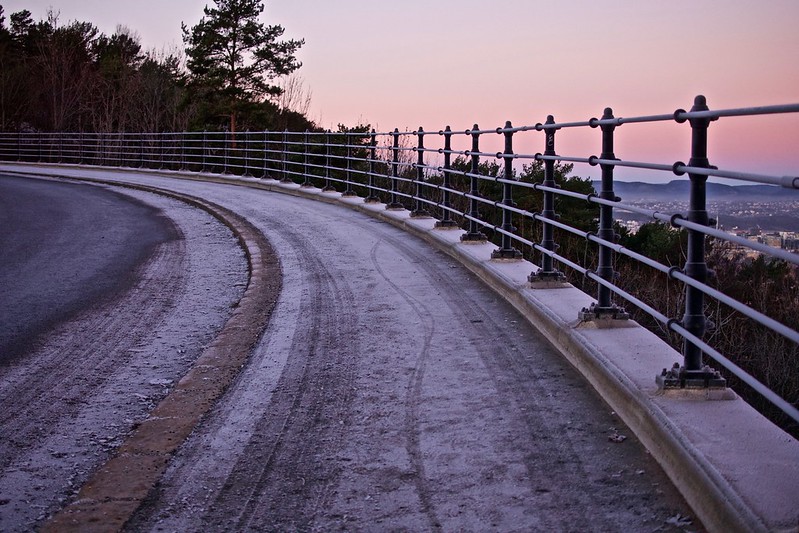
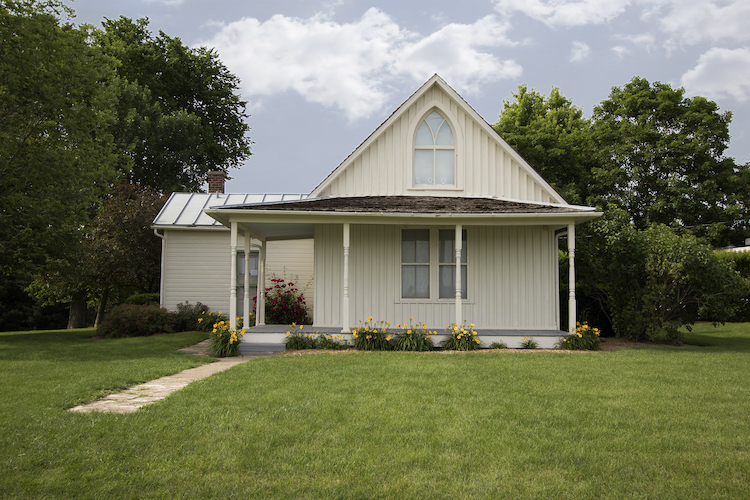








최근댓글